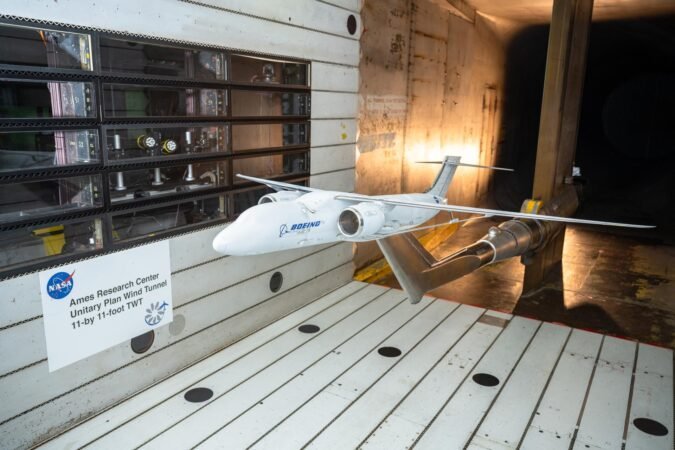Quick Takeaways
- NASA and Boeing are shifting focus in the Sustainable Flight Demonstrator project to prioritize thin-wing technology applicable across various aircraft configurations.
- The X-66 flight demonstrator development will be paused while a ground-based testbed for long, thin-wing technology is researched, retaining existing designs and hardware for future consideration.
- Progress from the project has shown promising energy-saving potential and confidence in sustainable aircraft designs, leveraging extensive testing and modeling collaborations between NASA and Boeing.
- The ultimate goal is to enhance next-generation airliner efficiency, reduce travel and fuel costs, and bolster U.S. aviation’s technological leadership.
NASA and Boeing are exploring a new direction in aircraft technology. They focus on thin-wing designs that could reshape the future of flying. This initiative stems from the Sustainable Flight Demonstrator project, aimed at developing more environmentally friendly commercial airliners.
Boeing proposes to create a ground-based testbed. This facility will showcase the benefits of long, thin wings. Meanwhile, the work on the X-66 flight demonstrator will take a backseat. This aircraft currently features a complex truss-braced wing design. Researchers will pause this phase to concentrate on the thin-wing technology while still retaining all aspects of the X-66 design.
This shift follows insights gained from ongoing research. Since launching the Sustainable Flight Demonstrator award in 2023, significant strides have been made. Boeing and NASA have engaged in wind tunnel tests and advanced modeling techniques. These efforts focus on improving fuel efficiency and sustainability in aircraft design, contributing to the knowledge base around energy savings.
The thin-wing concept shows promise beyond its initial applications, with potential uses in a range of aircraft configurations. Both organizations remain committed to studying the truss-braced wing while prioritizing the new thin-wing focus.
Ultimately, NASA aims to enhance airliner efficiency, reduce costs for travelers, and lower fuel consumption. This research not only advances aviation technology but also positions the U.S. as a leader in sustainable air travel. Through collaboration and innovation, NASA and Boeing are paving the way for a greener future in aviation.
Continue Your Tech Journey
Learn how the Internet of Things (IoT) is transforming everyday life.
Stay inspired by the vast knowledge available on Wikipedia.
SciV1

